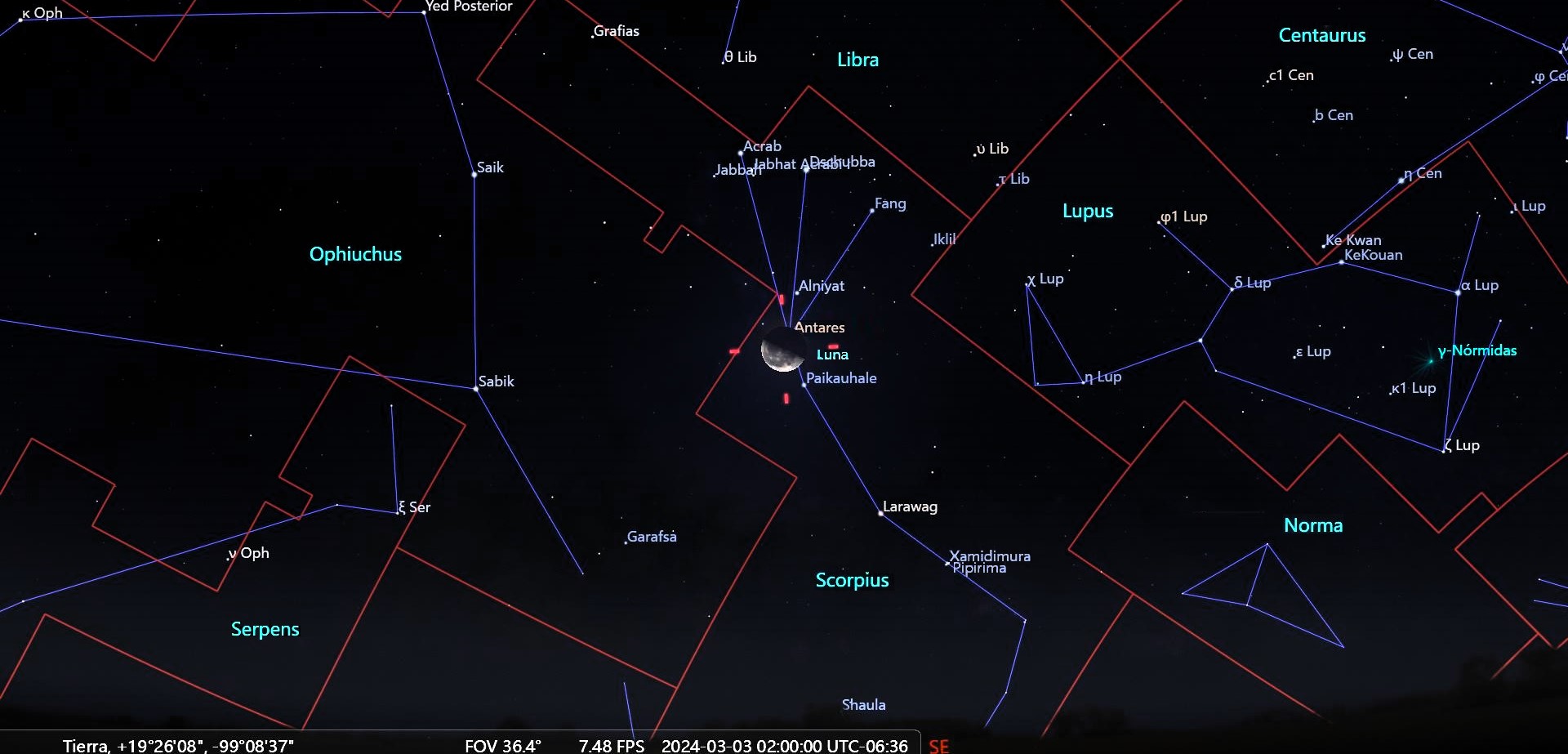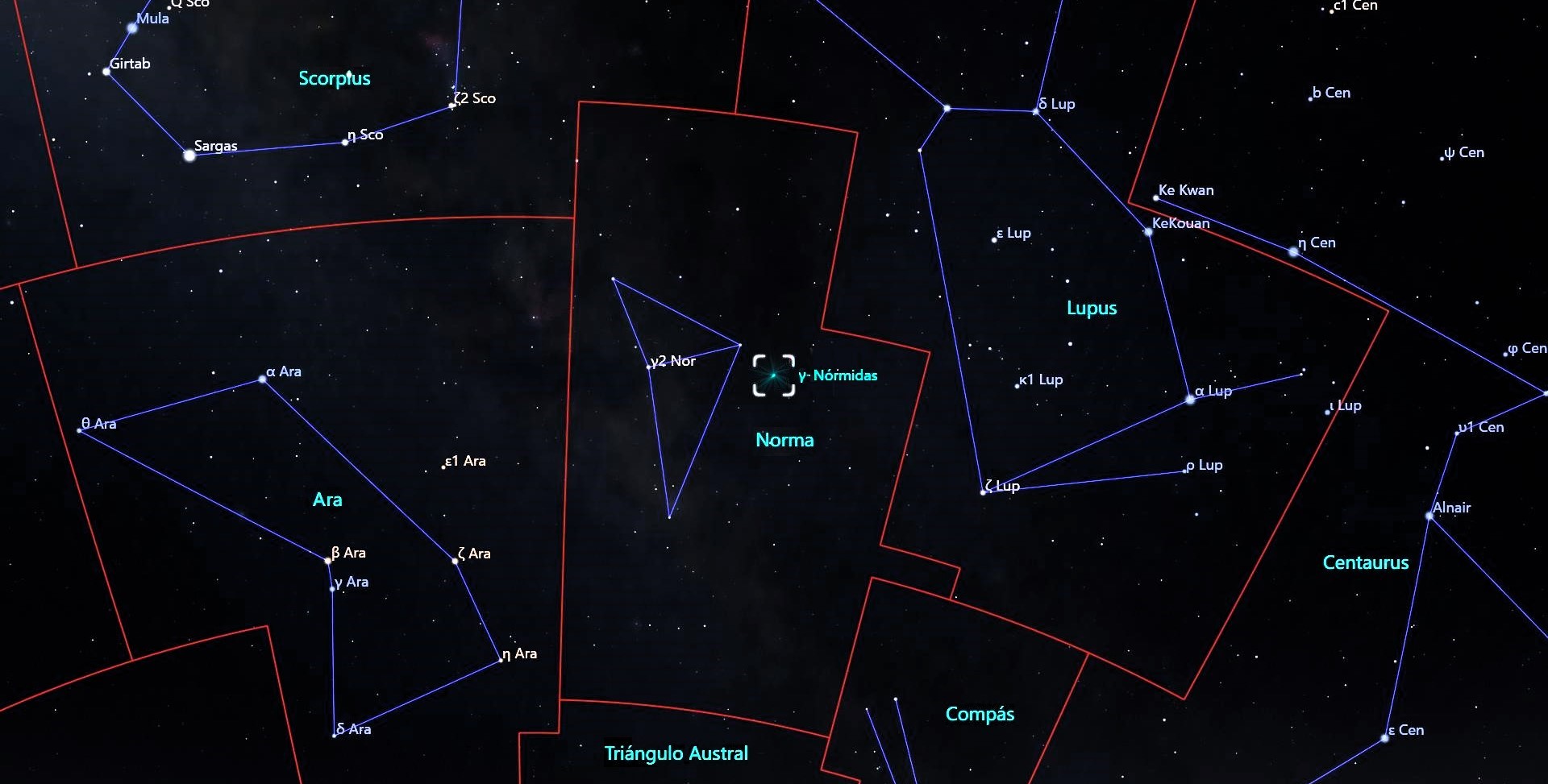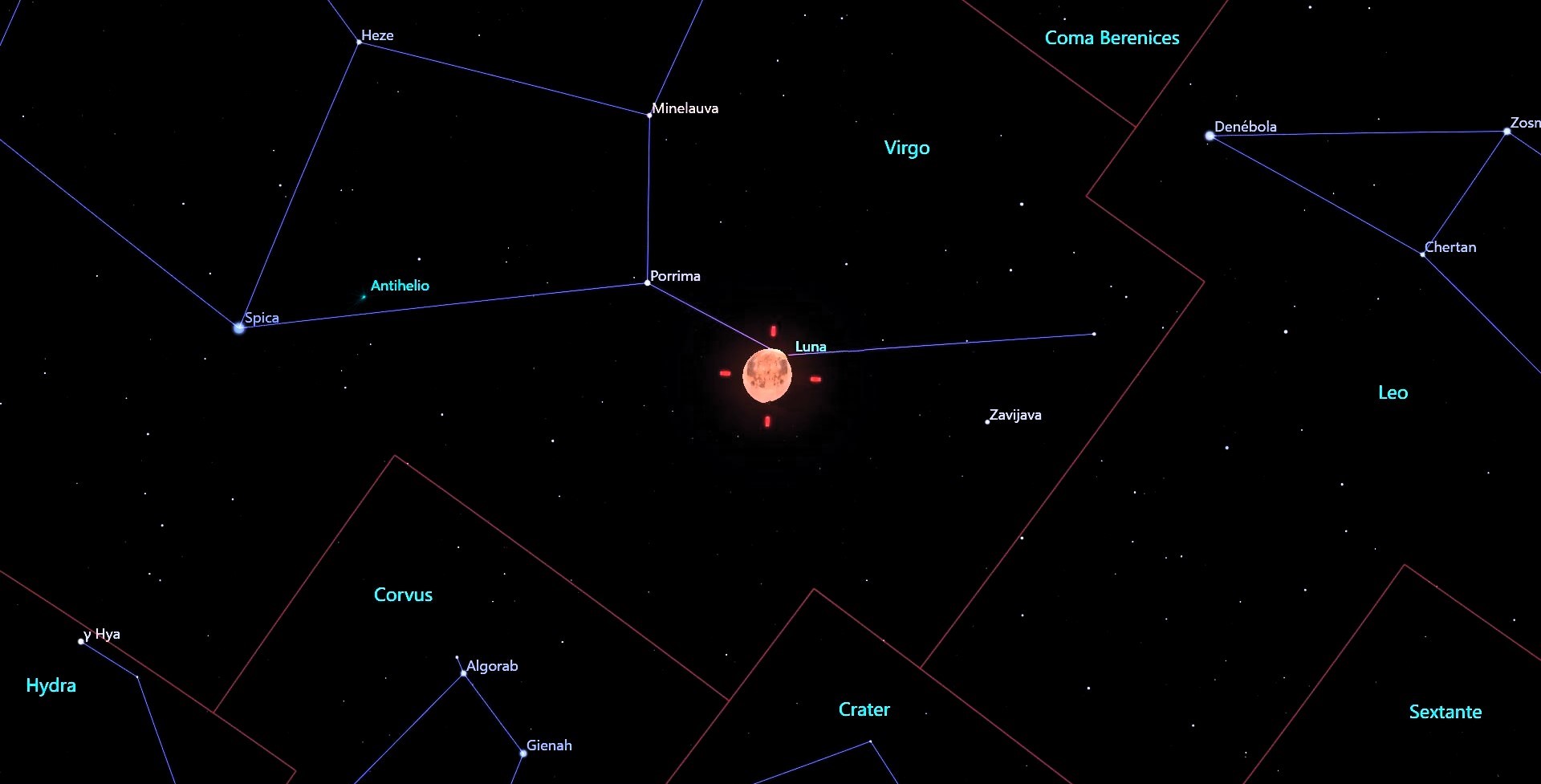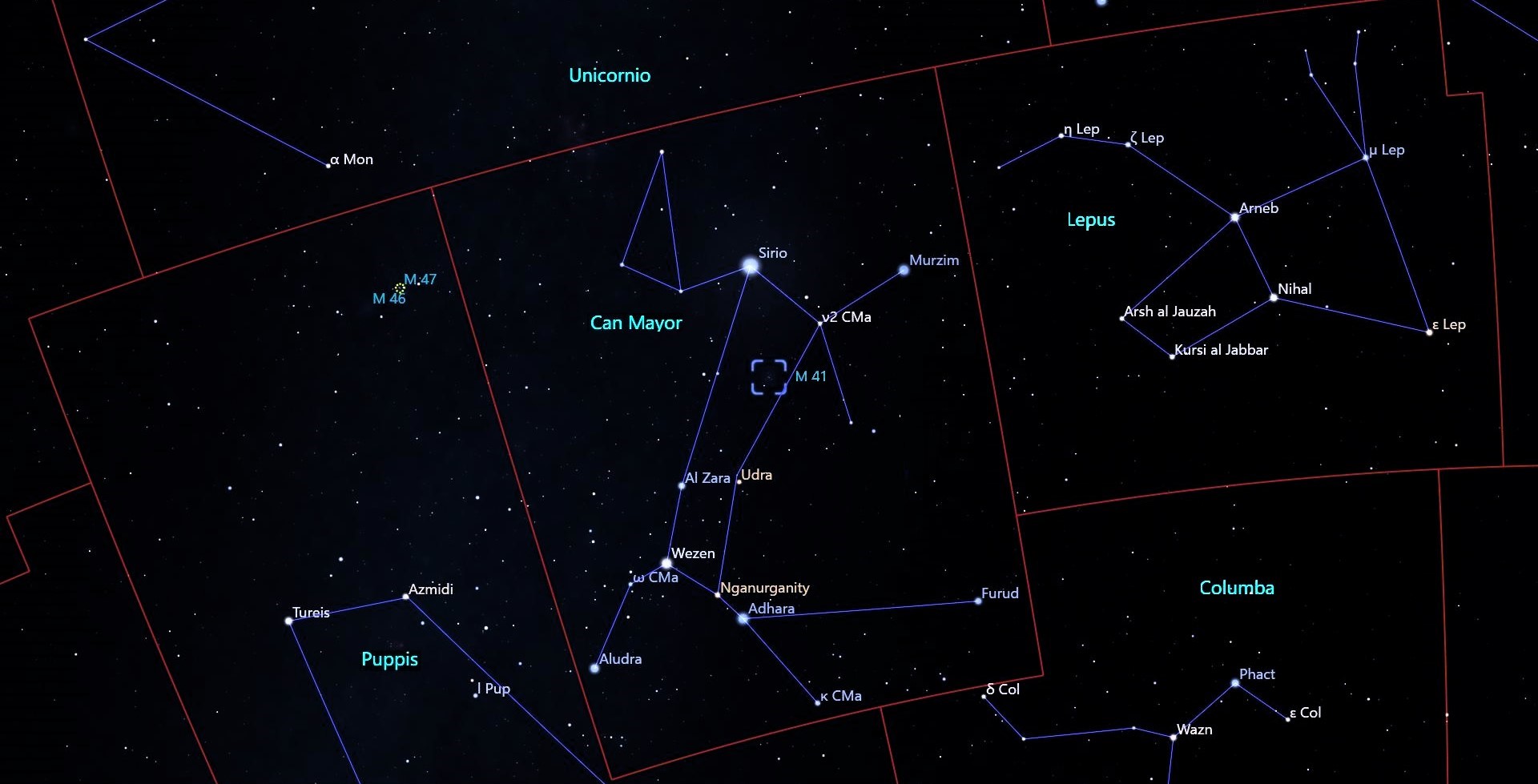Astronomical events for the month of March 2024
After winter and everything it implies, it is already March and the long-awaited spring arrives, we tell you when and at what time. This month we celebrate the invaluable work of women in society and in science. We comment on some common, but little observed astronomical events, lunar occultations. Likewise, if weather conditions allow, we will see a slight meteor shower and a penumbral eclipse of the Moon. And as the challenge of the month, we propose the object Messier 41. Of course, the anniversaries of the Moon cannot be missed.
The long-awaited spring
The spring equinox is the moment when the Sun crosses the imaginary plane in the sky generated by the extension of the Earth's equator, it is the moment, in the Earth's path around the Sun, when the axis of our planet is perpendicular to the rays from our star and the duration of day and night is practically the same. In the northern hemisphere, the spring equinox occurs on March 20 at 03:04 Universal Time, that is, on March 19 at 9:04 p.m. Central Mexico; Meanwhile, for the southern hemisphere, autumn will begin.
Pillars of society
This year, the theme proposed by the United Nations Entity for Gender Equality and the Empowerment of Women (UN Women) to commemorate International Women's Day is “Financing women's rights: accelerating equality.” . The perspective of women in science is fundamental not only for its development, but also for eliminating the gender gap. Here we name some Mexican astronomers, whose contributions have been fundamental in different aspects of science.

Paris Pismish, precursor of modern astronomy in Mexico

Gloria Koenigsberger, pioneer of the Internet in Mexico

Silvia Torres, president of the International Astronomical Union

Julieta Fierro, pioneer of scientific dissemination in Mexico
Now you see it and now you don't see it
On March 3, between 00:53 a.m. and 05:09 a.m. Central Mexico time, the heart of Scorpio will be hidden by the Moon. That is, the Moon will pass in front of the star Antares, the ? star, the brightest, in the constellation of Scorpio, occulting it for a few hours, giving rise to what is astronomically known as a lunar occultation.
Occultations happen when the Moon, in its path around the Earth, passes in front of some celestial object, with respect to a particular observer; Therefore, the location from which the observer is located is of vital importance. This astronomical event is not rare, but it is very local, given that, in occultations, the objects have an apparent angular size much smaller than the apparent angular size of the Moon, this condition being what differentiates it from an eclipse, where the apparent angular sizes are similar.
To have an accurate schedule for a particular location, it is suggested to use Stellarium, which is an open source sky simulator, for any computer or phone, which shows the sky in different ways: as it would be seen with the naked eye, with binoculars or a telescope. There is a free version that can be downloaded from the page: https://stellarium.org/es/
A moderate southern rain
It is known as the ?-Normid meteor shower, because its radiant, the point where this shower seems to originate, is located in the constellation of Norma (the Square or Rule); This meteor fall is not one of the most spectacular, as it will only have a maximum of 6 meteors per hour and will be active between February 25 and March 28, with the maximum on March 14. The object causing this shower has not been determined and it is likely that the shower produces its best displays shortly before dawn, towards the south-southeast part of the celestial sphere.
The faint constellation of Norma is located in the southern hemisphere, between the constellations of Scorpio, Lupus, Altar, Compas and the Southern Triangle, and represents a ruler, square, level or carpenter's square. It was cataloged for the first time by Nicolás de Lacaille in the 18th century.
To observe it, no help from any instrument is required, you just need to look up at the sky and arm yourself with a lot of patience.
Penumbral lunar eclipse
A solar eclipse is usually accompanied by a lunar eclipse. And the case of the total solar eclipse on April 8 is no exception, since we will have a penumbral lunar eclipse, also visible in the Mexican Republic.
On the night of March 24 to 25, the Moon will pass through the faintest part of the Moon's shadow, the so-called penumbra, generating a penumbral eclipse. In addition to Mexico, it will be visible from much of Europe, North and East Asia, North America, South America, the Arctic and Antarctica. These are the schedules:
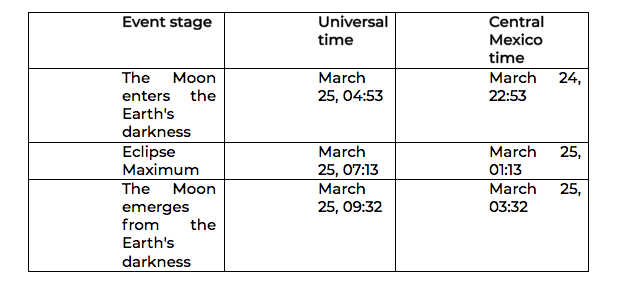
Orion and Canis Major
As a relatively easy object to locate, M41 was surely observed since ancient times, but credit for its discovery is attributed to Hodierna around 1654, while Charles Messier included it in his catalog in 1765.
To find M41, Small Hive Cluster or NGC 2287, in the constellation of Canis Major, it is only a matter of locating Orion, the hunter, and to the south of it look for the brightest star in the sky, Sirius or ? CMa . Once located, about 4° to the south, we will find M41, very close to a magnitude 6 star called 12 CMa.
M41 is located at a distance between 2,300 and 1,600 light years from Earth, has an estimated age between 190 and 240 million years, and is made up of a hundred members distributed in a volume of about 26 light years in diameter, so It is not difficult to think of several multiple systems of red or orange giant stars. M41 will be well positioned for viewing most of the night, with binoculars or a small telescope, towards the southeastern part of the celestial sphere.
Phases of the Moon (Central Mexico time).
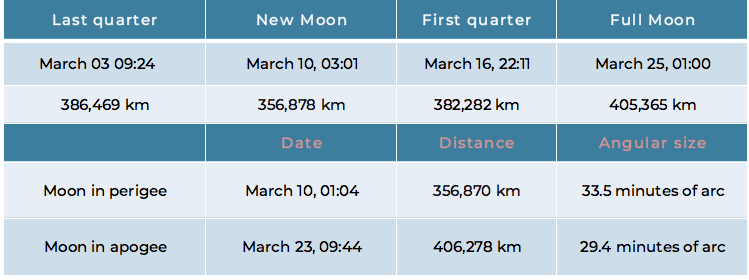
Watch the video of the month: https://youtu.be/oea1nmvp-rY
Contacts:
Dr. Agustín Márquez Limón (amarquez@inaoep.mx), Coordinación de Astrofísica-INAOE
M.C. Tania Martínez (astronomaplanetariokayok@gmail.com), Red de Planetarios del Estado de Quintana Roo
Dr. Raúl Mújica García (rmujica@inaoep.mx), Coordinación de Astrofísica-INAOE y Noche de las Estrellas
Luis Enrique Erro # 1, Tonantzintla, Puebla, México, Código Postal 72840, Tel: (222) 266.31.00, difusion@inaoep.mx
This work is licensed under a Creative Commons Attribution-NonCommercial-NoDerivs 2.5 Mexico License.


